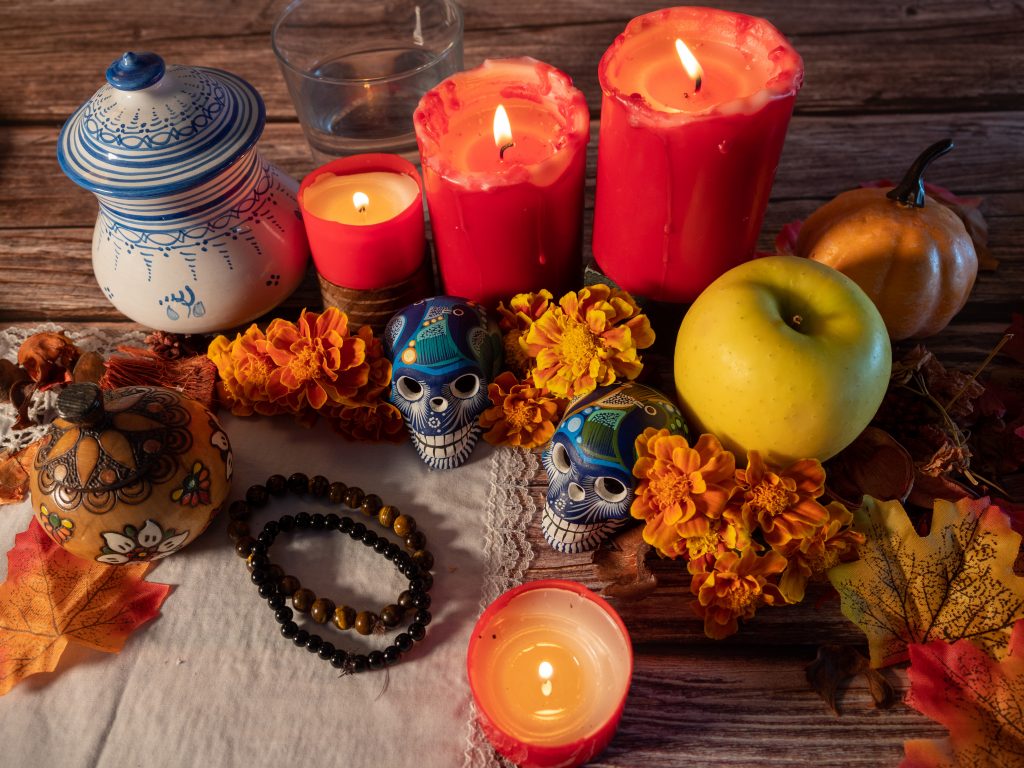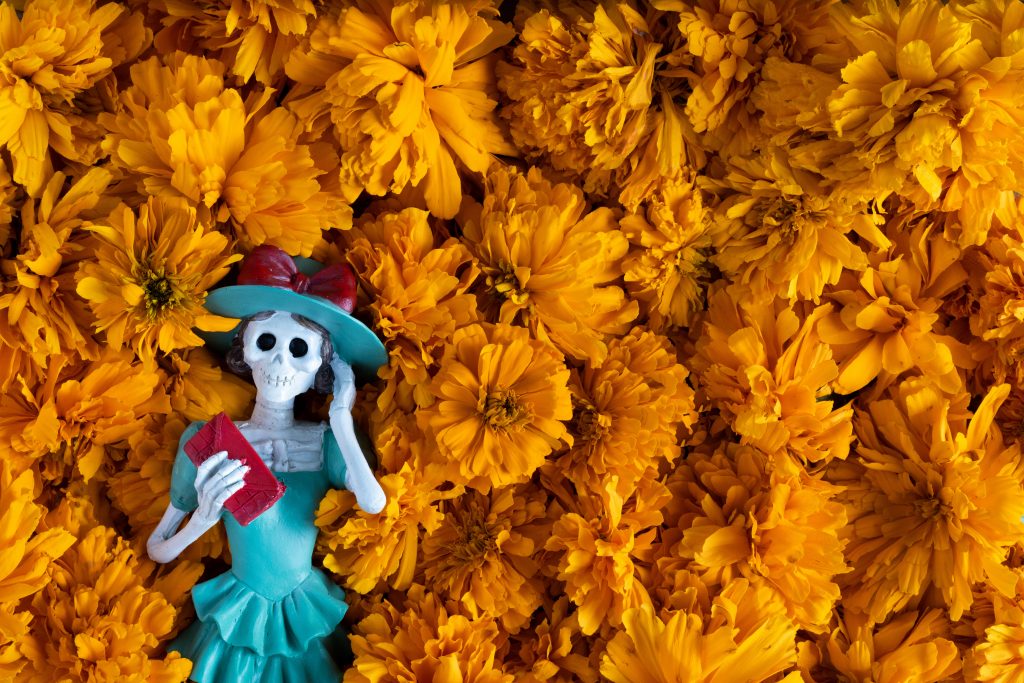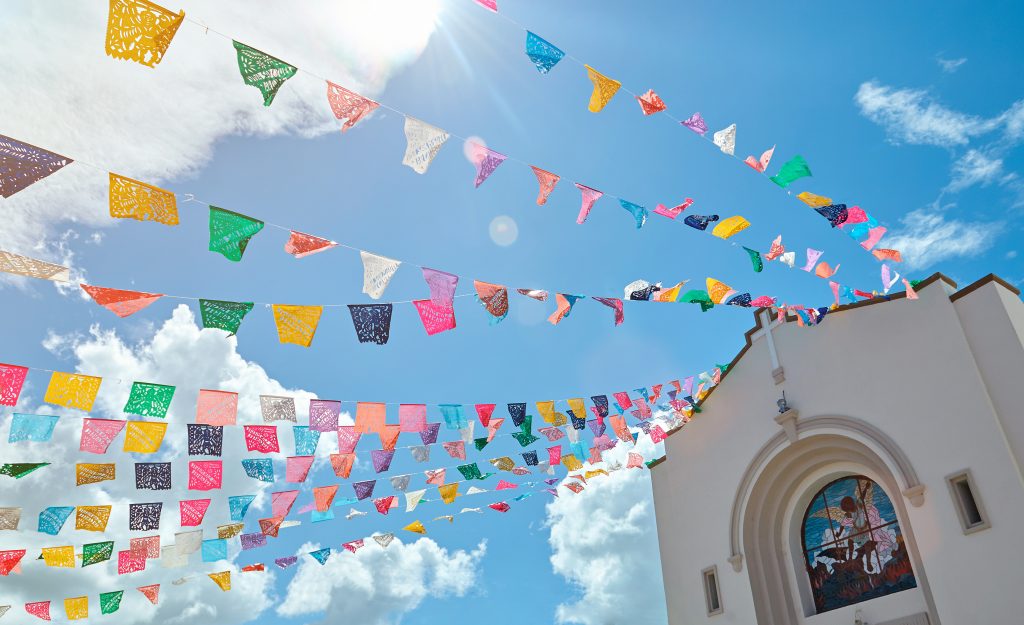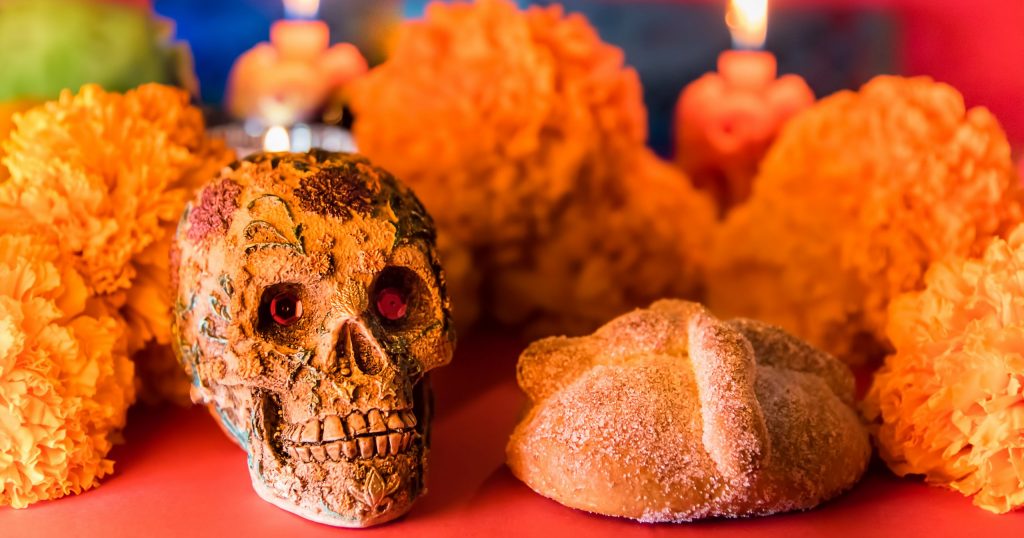Día de los Muertos is a time for community gatherings and celebrations, where families come together to share stories, music, memories, and laughter. In Mexico and beyond, the streets and neighborhoods come alive with colorful parades, vibrant costumes, and lively music, further reiterating a celebration of life. Everyone is filled with joy and unity, coming together to honor their loved ones and preserve their culture.
The Essence of Día de los Muertos
Día de los Muertos or Day of the Dead is an important Mexican holiday that spans over November 1st and November 2nd. Each respected day is used to celebrate adults and children who have passed. November 1st is reserved to honor any children who have passed during this time, while November 2nd is used to celebrate adults. While death is a time for grief, Día de los Muertos reminds us of the joy in life and turning the concept of death into a celebration of life. Packed with many traditions and fun festivites, it serves as a reminder of honoring and respecting our loved ones.

What is an Ofrenda?
One of the well-known aspects of Día de los Muertos is the building of the ofrendas, or altars. Commonly found in home or cemeteries, they are adorned with marigolds, candles, family pictures, food, and mementos from your loved ones. Each ofrenda is carefully made to reflect the personality of their loved ones, usually through a variety of different items, including their favorite food and drinks. In these ofrendas you usually see pan de muerto (bread of the dead) sugar skulls, salt, water and papel picado (perforated paper). Each of these ofrenda elements have their own special meanings to help in the journey of their loved one’s coming back. The sugar skull, decorated with colorful icing, symbolizes the sweetness of life and the inevitability of death. Pan de muerto is a sweet bread bun with bone-like decorations that is shared amongst family and friends. Salt serves as the seasoning for food and used to purify the home and area around the ofrenda. Water is left out to quench the thirst after the journey back home and papel picado represents the wind and joy of the holiday showcased in vibrant colors further emphasizing the idea of joy and celebration.
The Importance of Food
Food plays a crucial role in honoring ancestors; this practice dates back to the Mayans and Aztecs who believed it had spiritual significance and was a key element in festivals. Any food and drink can be used in an ofrenda, but you’ll commonly see traditional Mexican dishes like the following:
- Mole Poblano
- Mexican Hot Chocolate
- Atole or Champurrado
- Sugar Skulls
- Pozole (rojo, verde, or blanco)
- Pan de Muerto
- Tamales (corn are most common in Michoacán, chicken and green salsa are common in Mexico City)
- Café de olla
What Each Color Represents
Colors play an important role and can be seen scattered throughout ofrendas and decorations creating a cheerful atmosphere with significant meaning. Black represents the Land of the Dead and is usually seen as the background color. Purple signifies pain, suffering, grief, and the mourning that accompanies death and acknowledges the loss of our loved ones.
Who is La Catrina

An iconic figure seen during Día de los Muertos is La Catrina, which originates from Mexican artist José Guadalupe Posada, who showcased a skeleton lady dressed in elegant attire. She gained popularity when Diego Rivera included her in his mural that captured the essence of Mexican society. La Catrina continues to stand as a central figure, representing the cycle of life and death. During Día de los Muertos many people wear her sugar skull makeup, creating intricate designs that represent a joyful and colorful celebration of life and its beauty, reminding us to continue cherishing life and remind us of our loved ones.
Día de los Muertos Today
In recent years Día de los Muertos has reached beyond Mexico and is celebrated by people of Mexican descent worldwide. It’s embraced as a symbol of cultural pride and resilience filled with colorful imagery. It has become a cherished event that brings people together.




